Preamble
The unprecedented Covid-19 pandemic has brought about significant detrimental ramifications to the social fabric, economic aspect and psychological wellbeing of people in every part of the world. As a major transportation hub, it was inevitable for Singapore to remove itself from the equation. The highly dense city state with a population of 5.69 million (Statistics, 2020), occupying a mere land area of 726 km2 (SLA, 2020), sprung into pandemic-response mode when the first case arrived on its shores late January 2020.
The Call to Recalibrate Our Living Environment
As cluster-cases proliferated the local community, stringent social distancing measures infiltrated the neighbourhoods. Soon enough, residents found themselves subjected to the confines of their homes as work-from-home and movement restrictions were enforced during the Circuit Breaker (Adrienne, 2020). The pandemic has undermined the meaning of public spaces which were intended for social cohesion (Stevens, 2018). On the otherhand, residents living in the public housing development also known as HDB flats were mostly affected due to the fact that they lack access to immediate outdoor spaces and gardens in the form of balconies and terraces, otherwise seen in landed properties and condominiums (Hong, 2020). The time of isolation has also urged us to rethink the urban environment, emphasizing the eminent human need for open air spaces, parks, and gardens. This episode has certainly highlighted the inadequacies of the built environment pertaining to the outdoor public spaces and the home.
“This thesis puts forth 3 key strategies – Redefining the components of a post-pandemic dwelling; The Park-House; Dwelling as instrument of income and refuge.”
The Need for Better Human-Centric Homes
In essence, the thesis seeks to explore how urban vibrancy can be recalibrated and shall address the pressing need to rethink the role of home gardens and outdoor spaces in a post-pandemic world. Consequently, one advocates that the future of public spaces and homes should be designed with greater generosity with regards to space provisions.
Key focus: Pandemic, Public Spaces, Homes, Gardens, Well-being
This project is part of a larger Filter City Masterplan by Prof Joseph Lim’s Studio
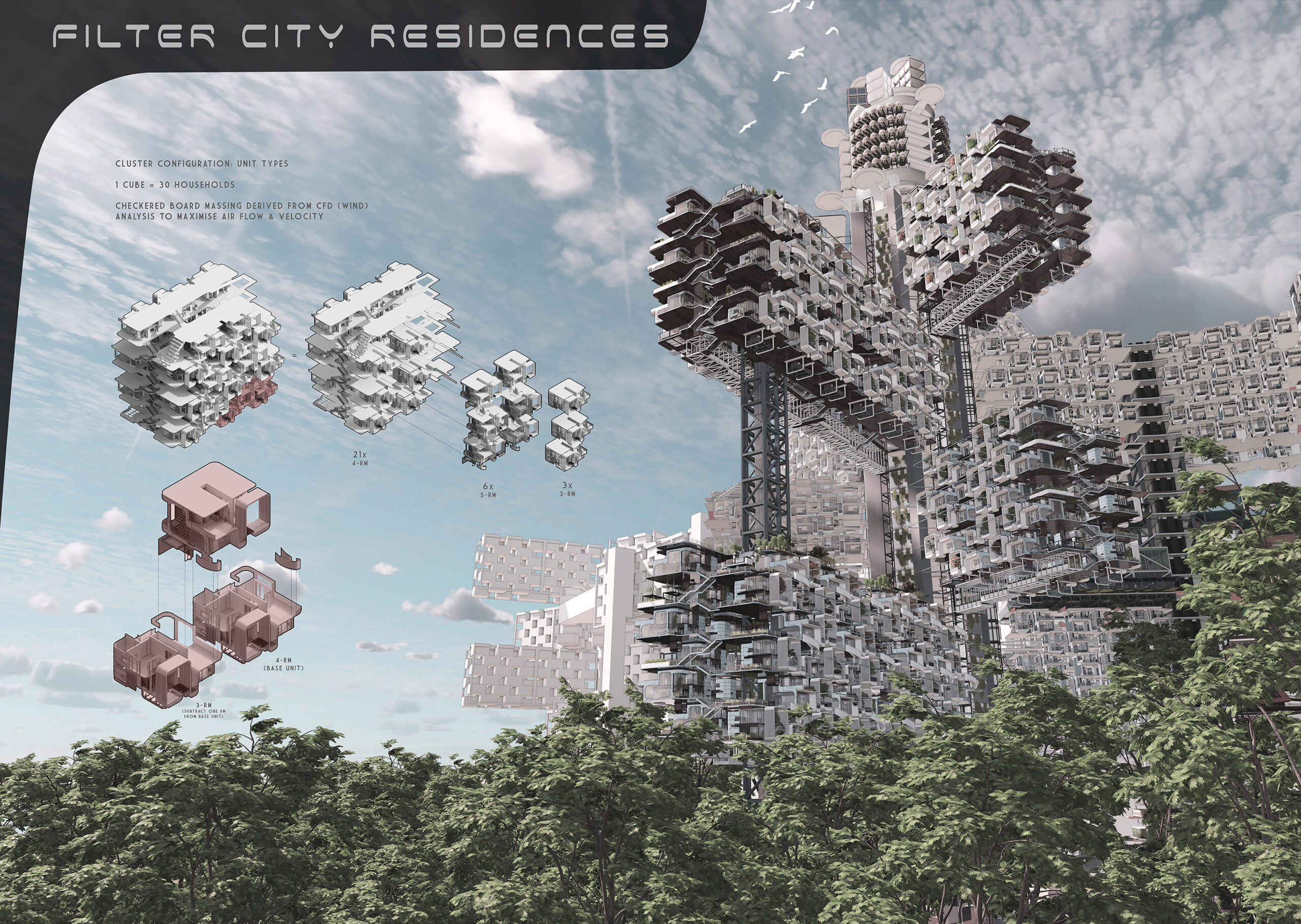
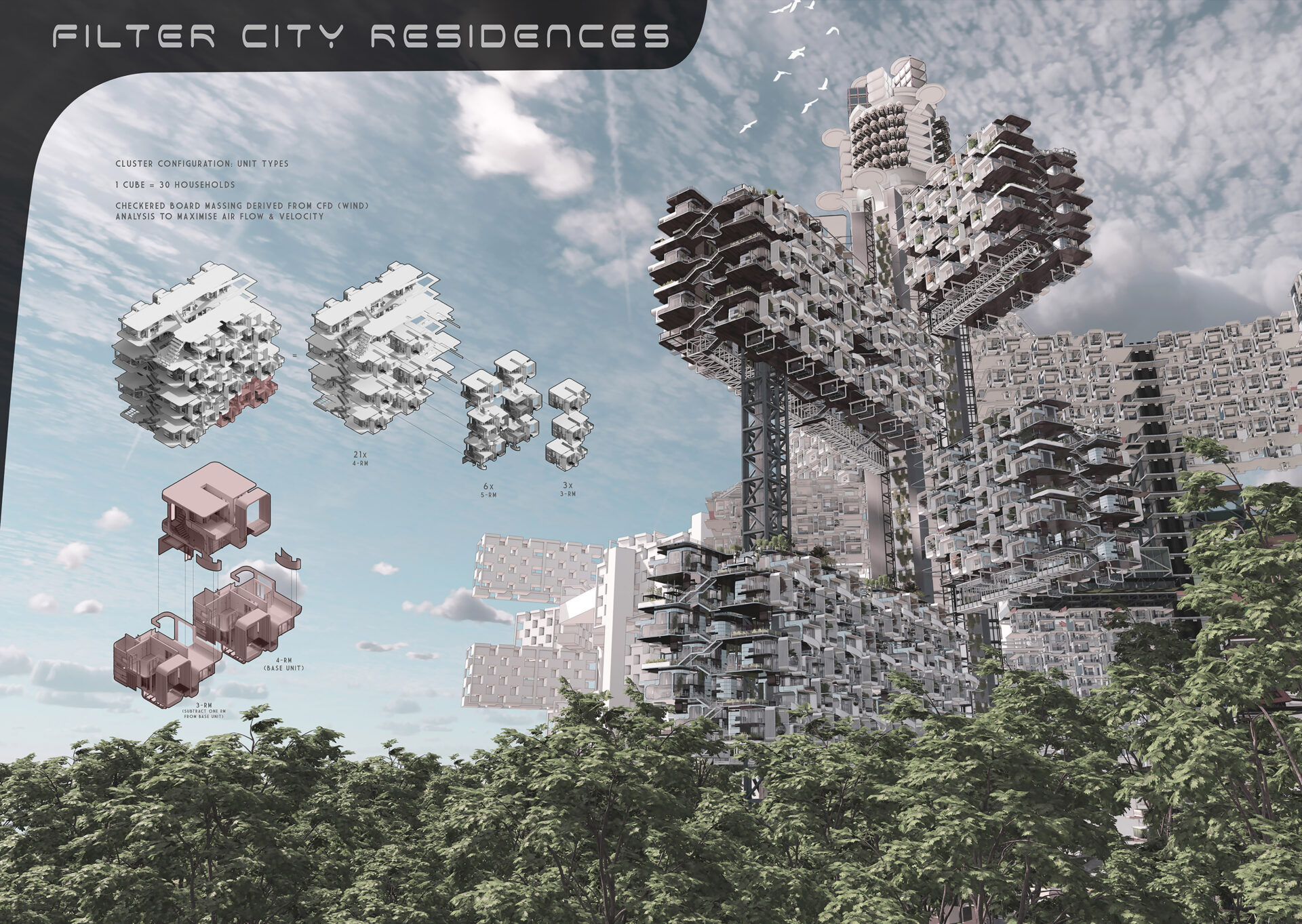
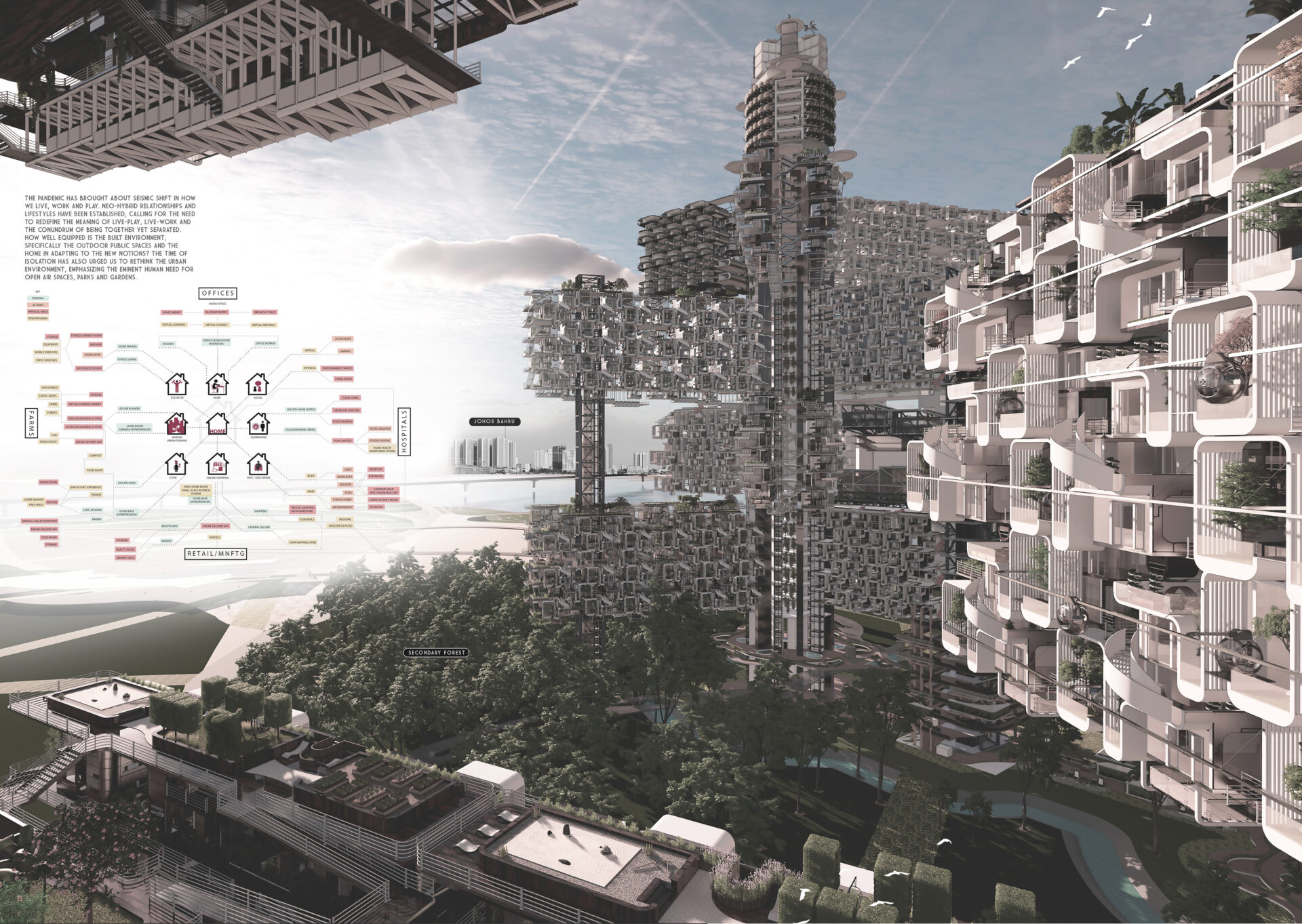
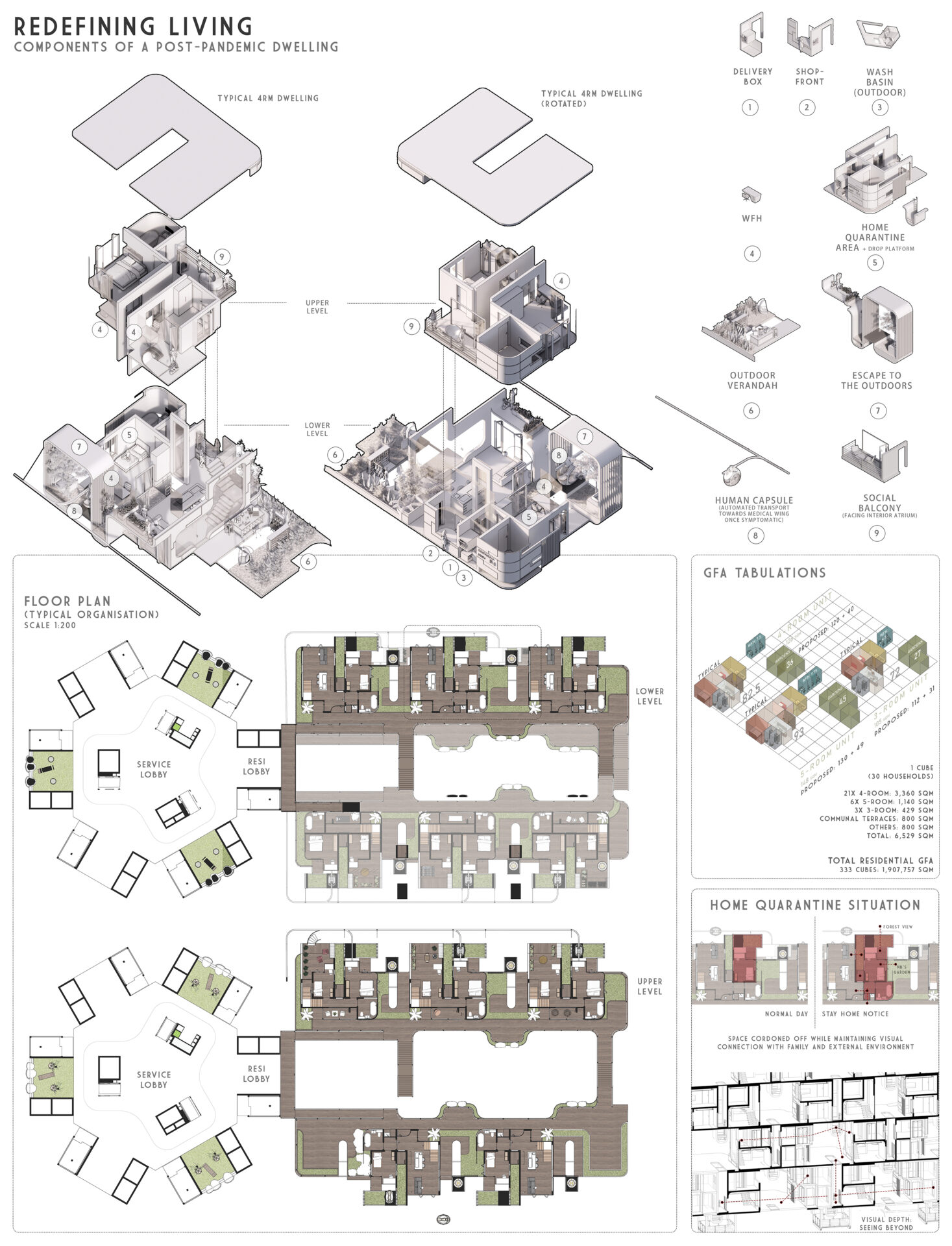
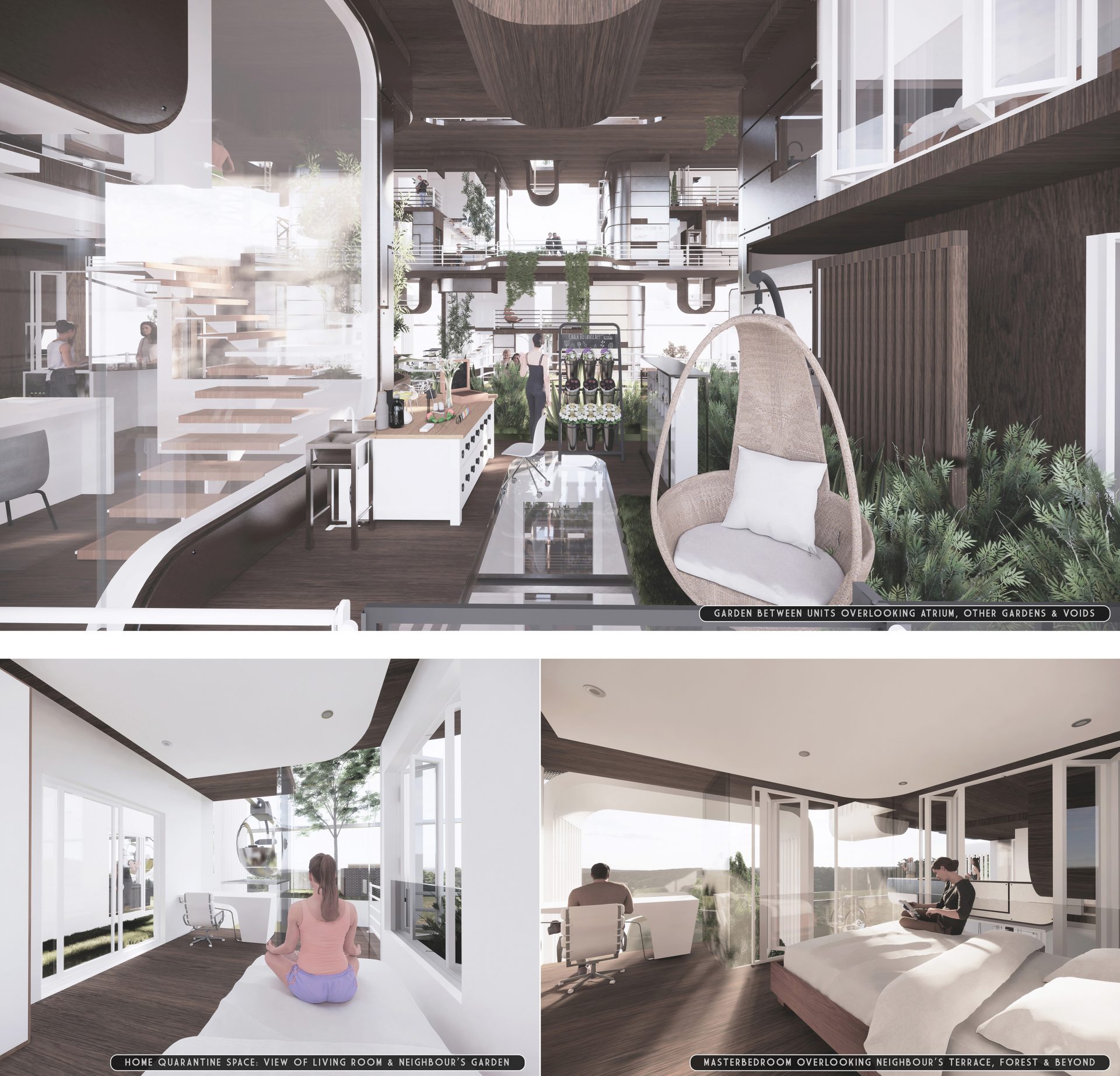
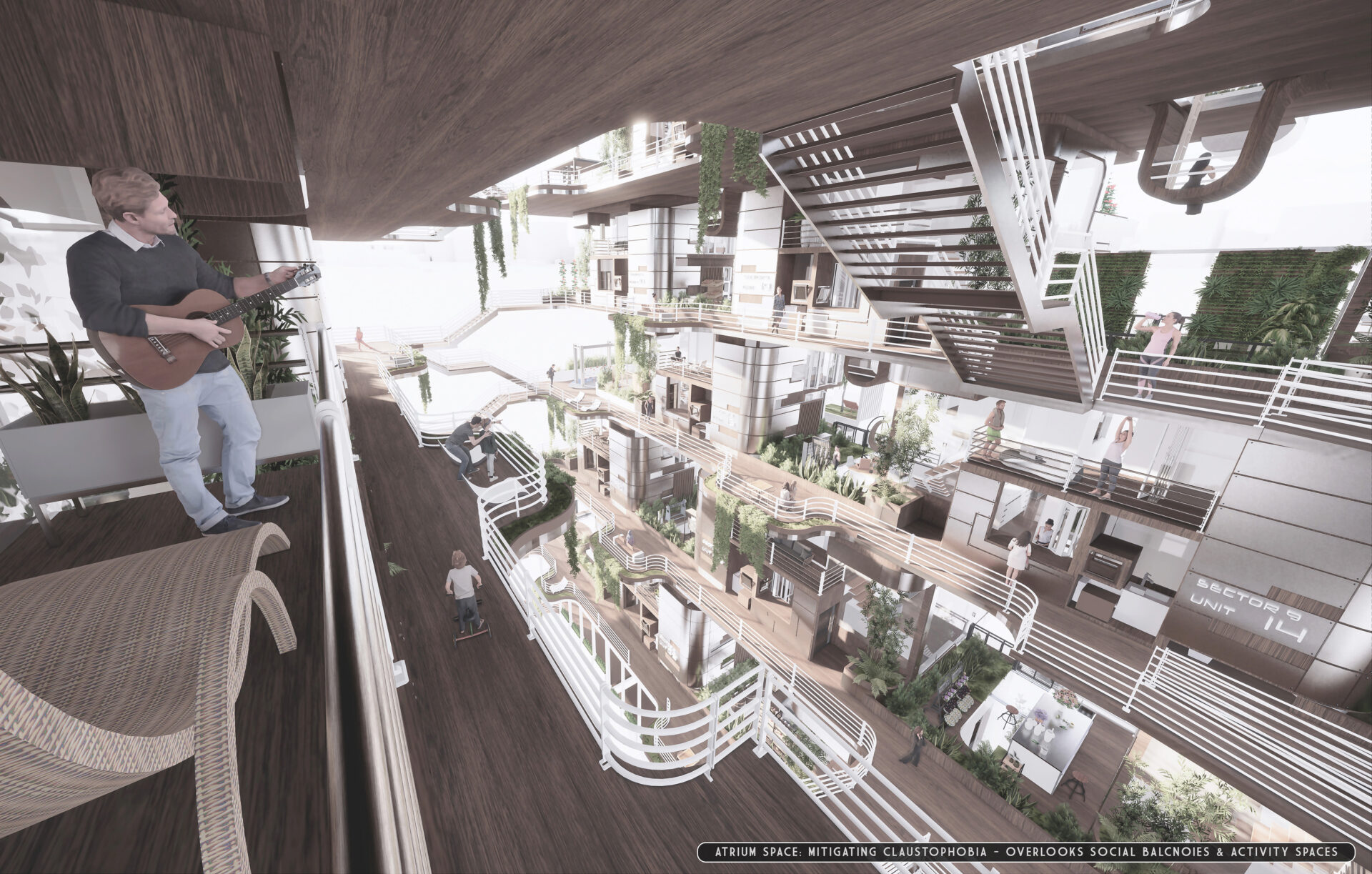
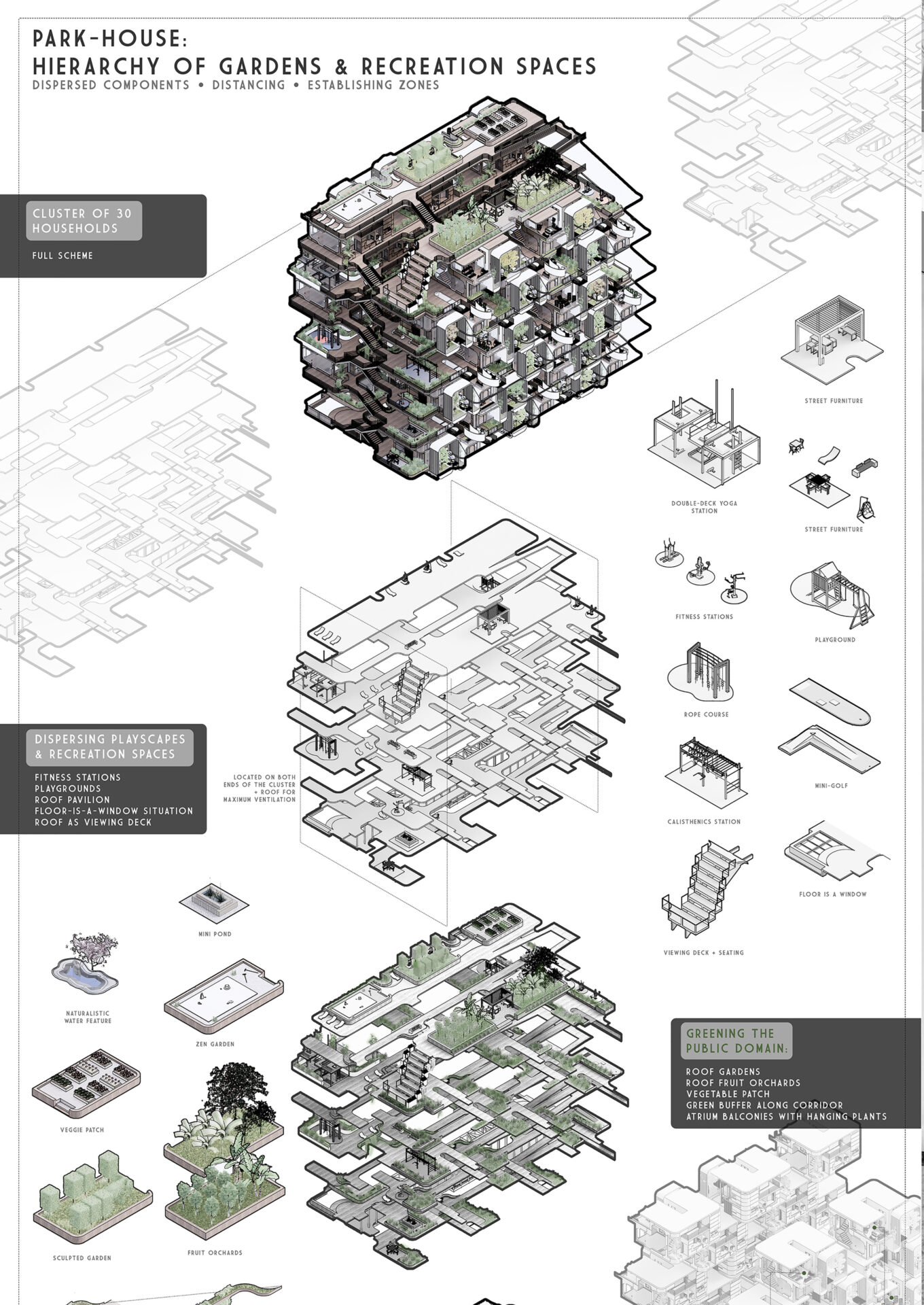
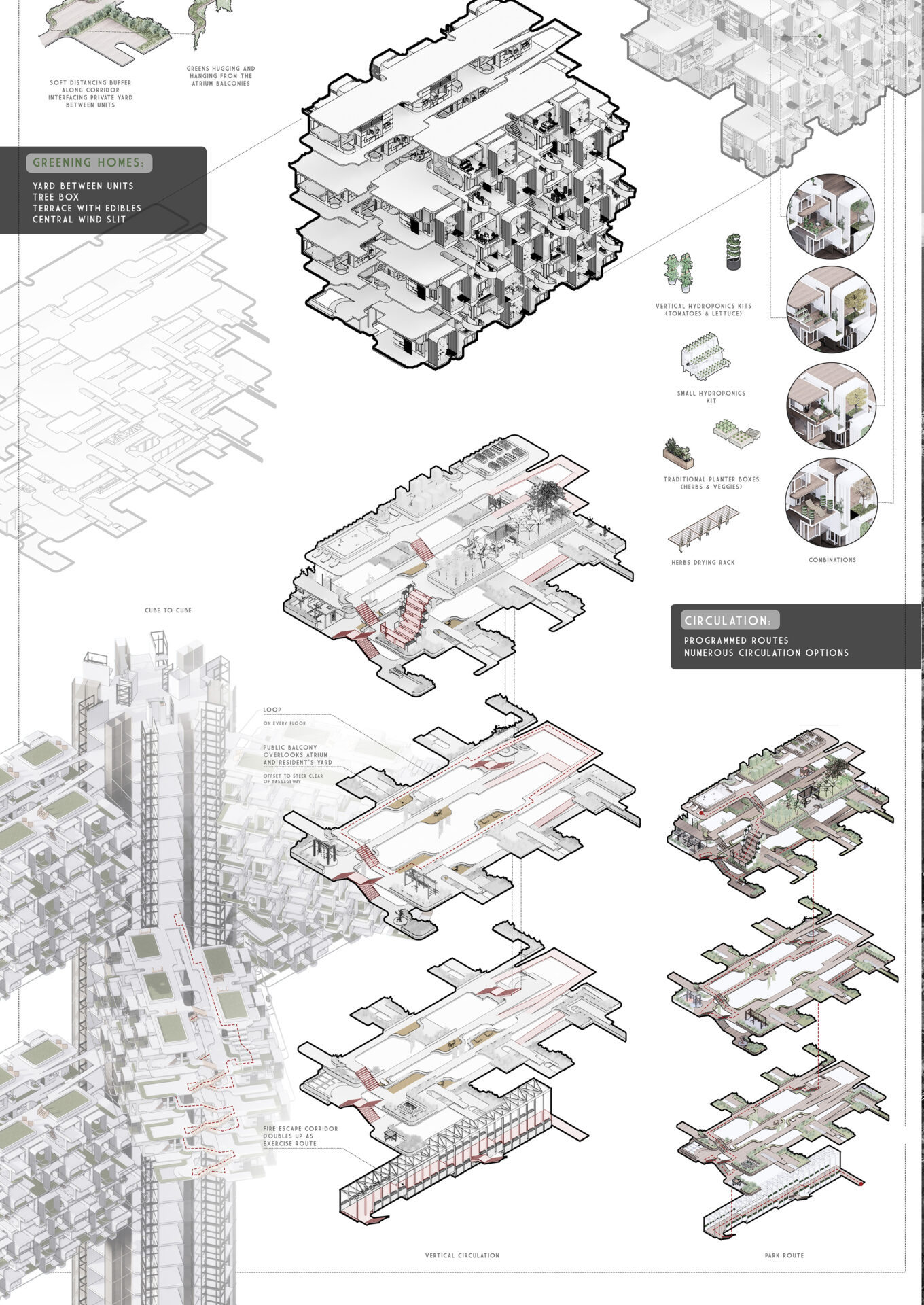
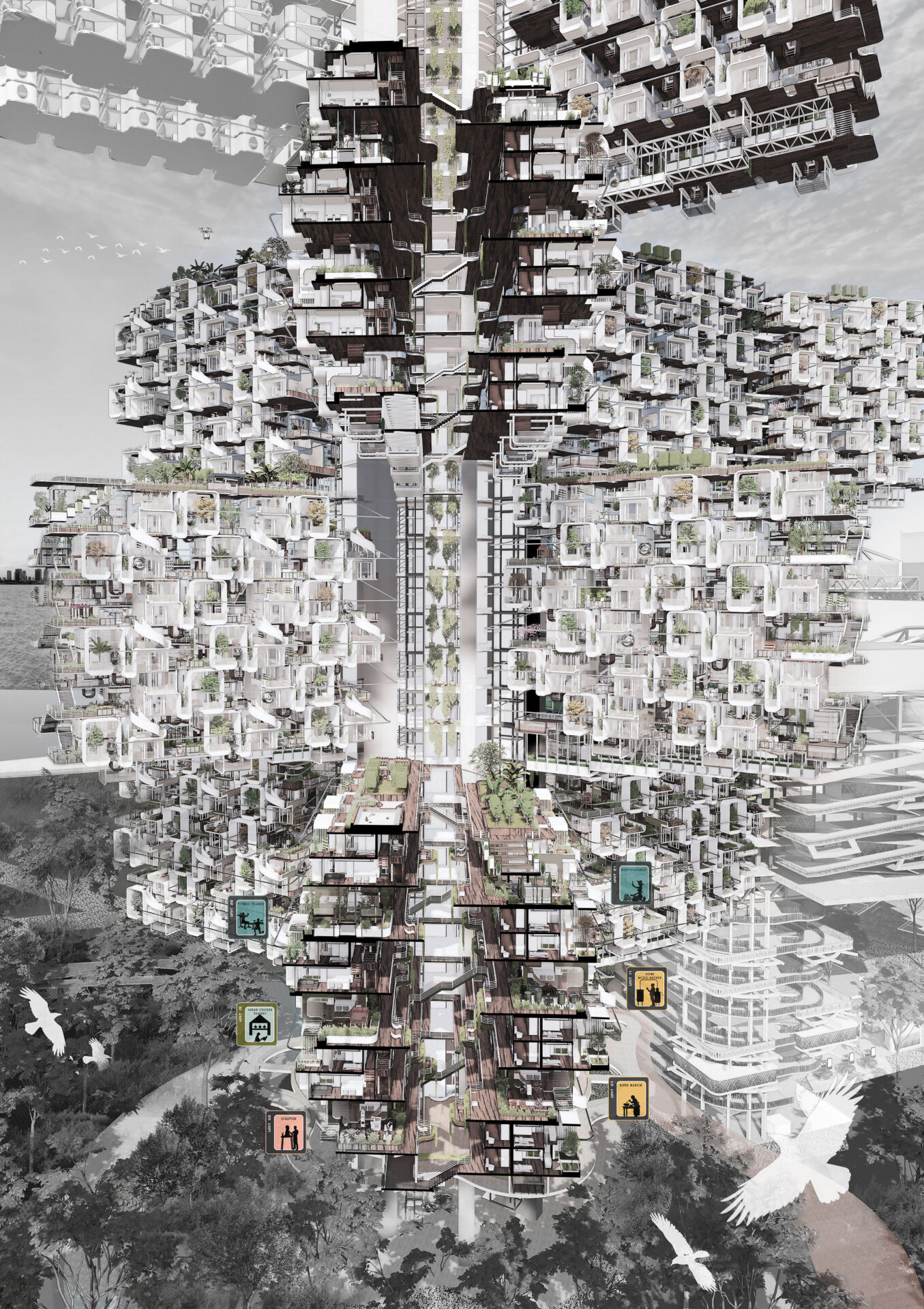
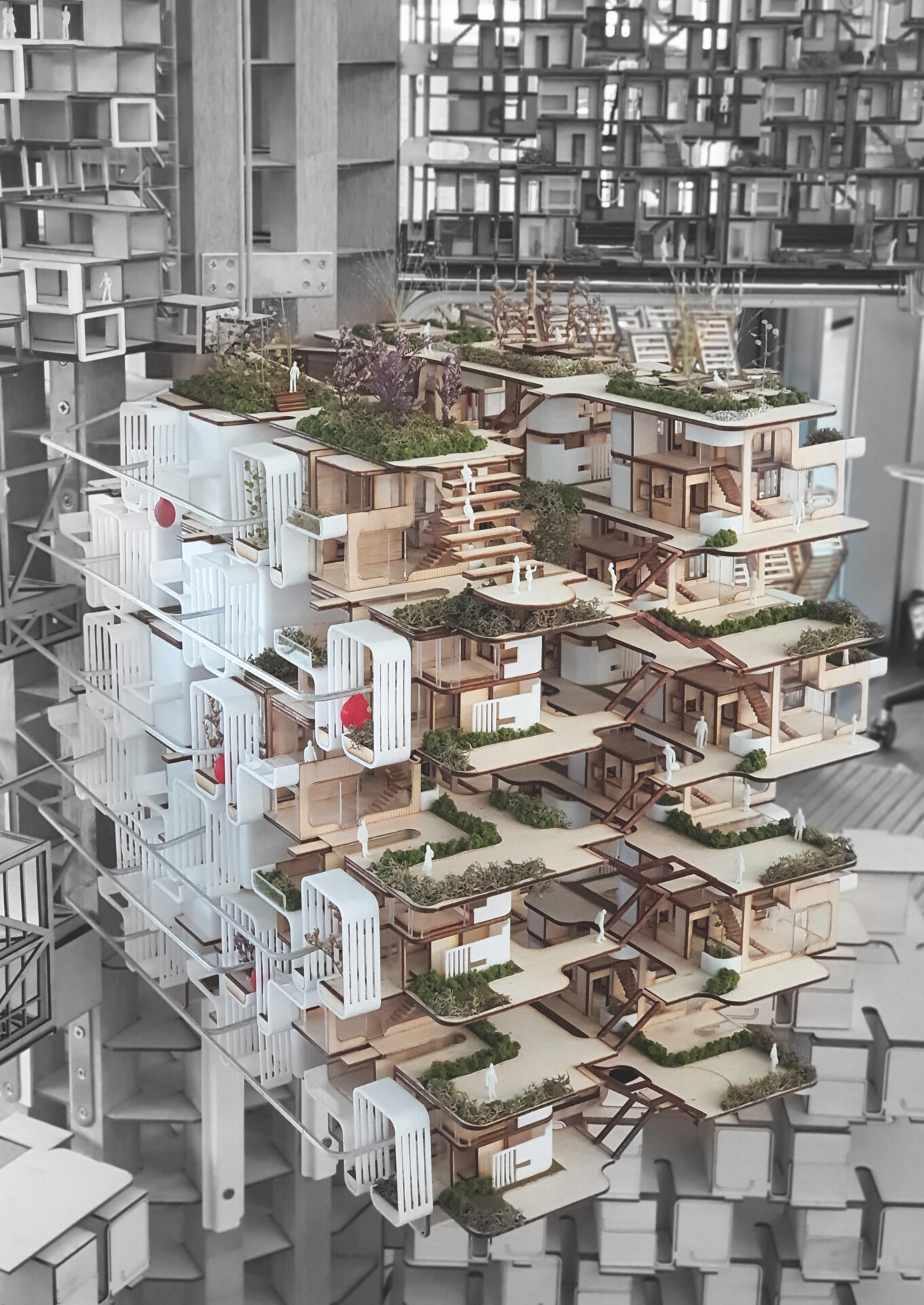
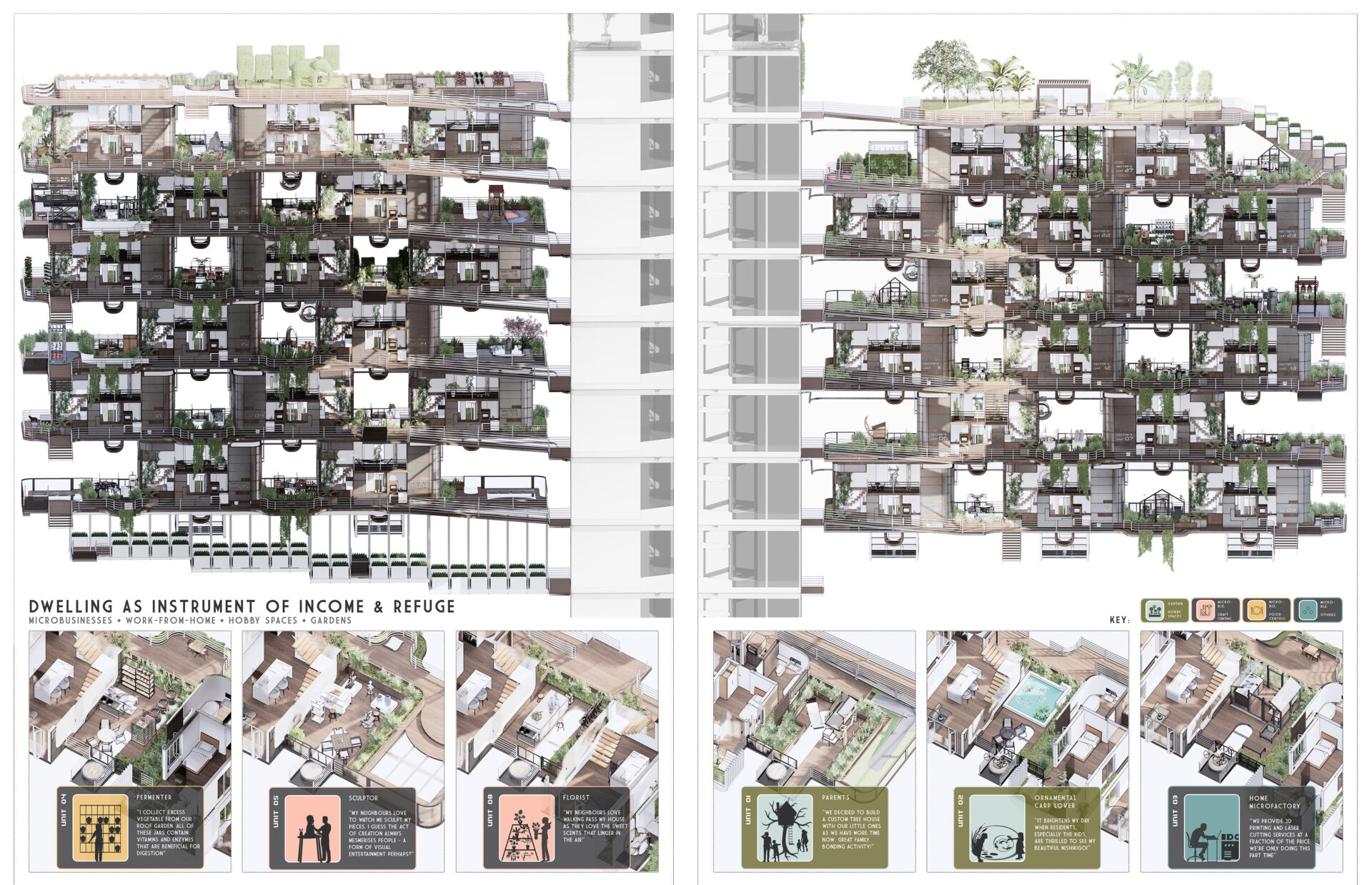
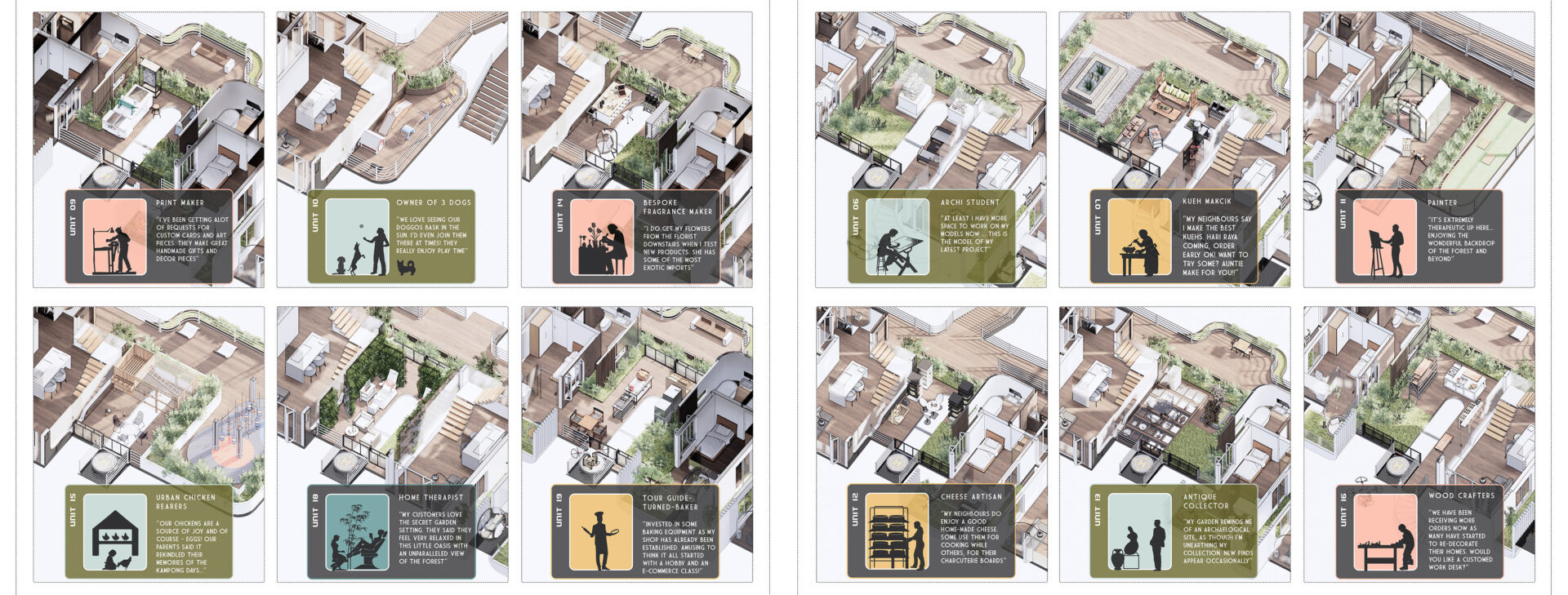
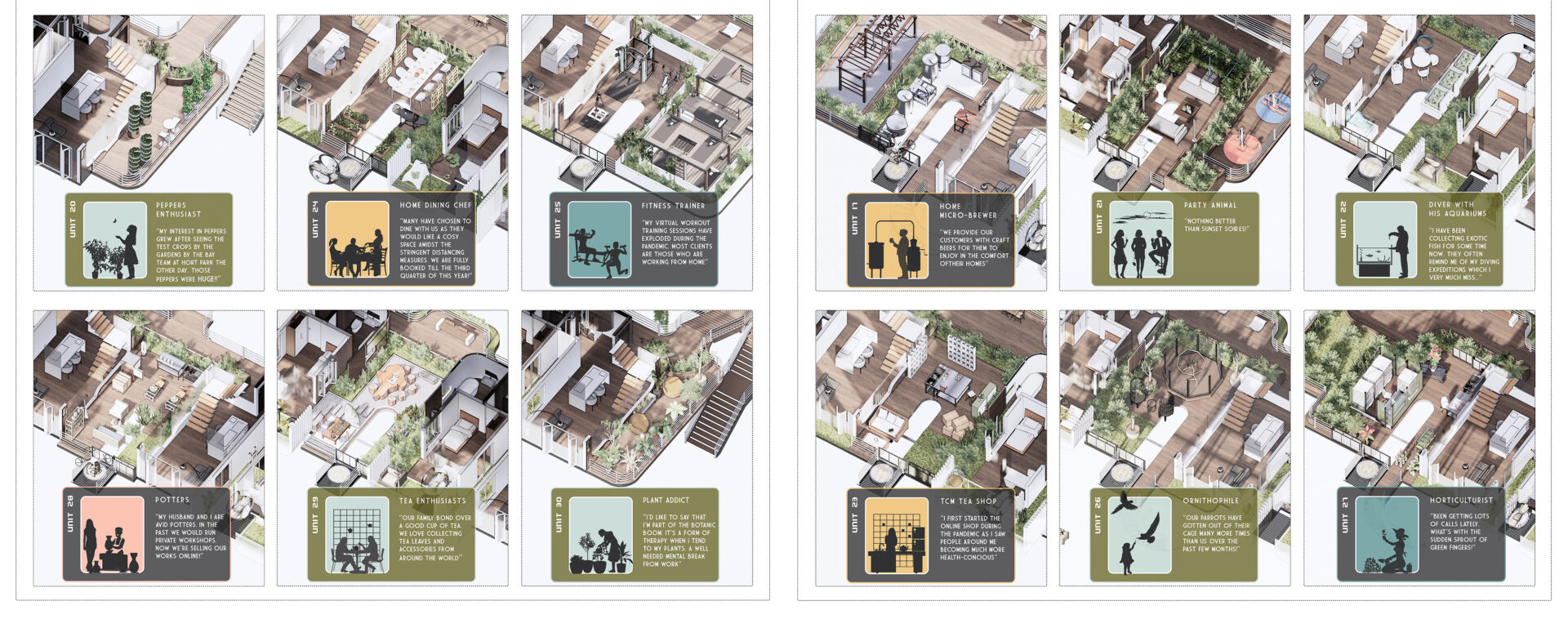
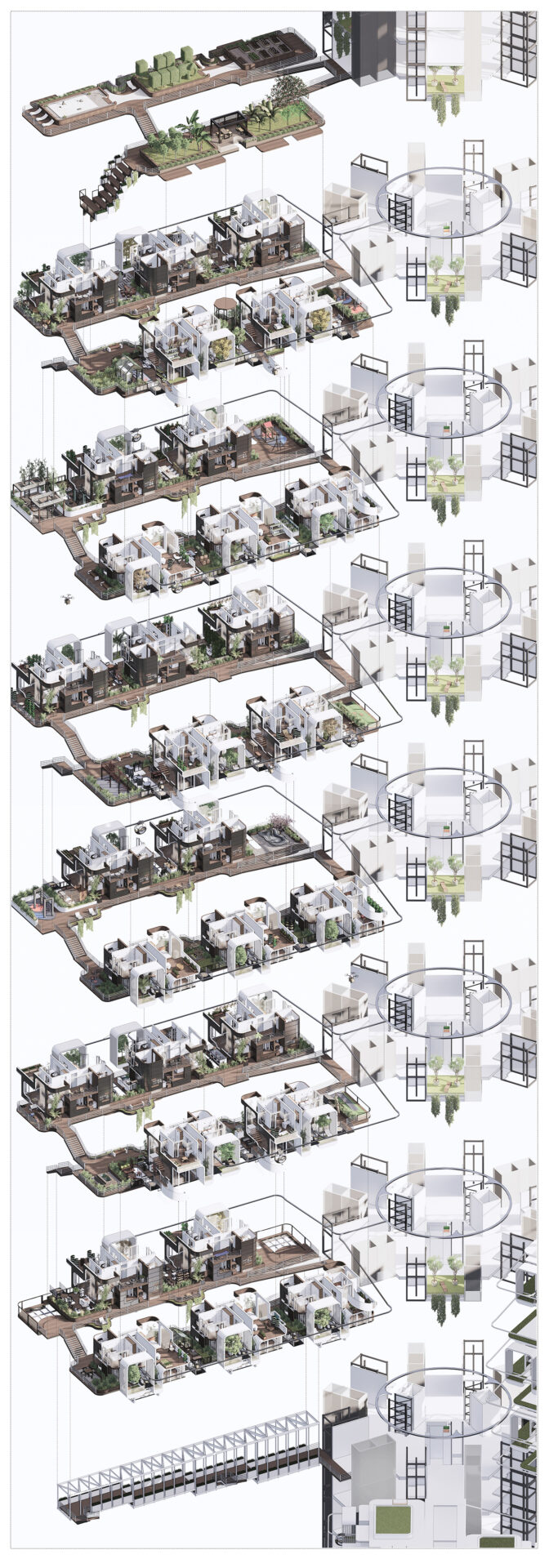
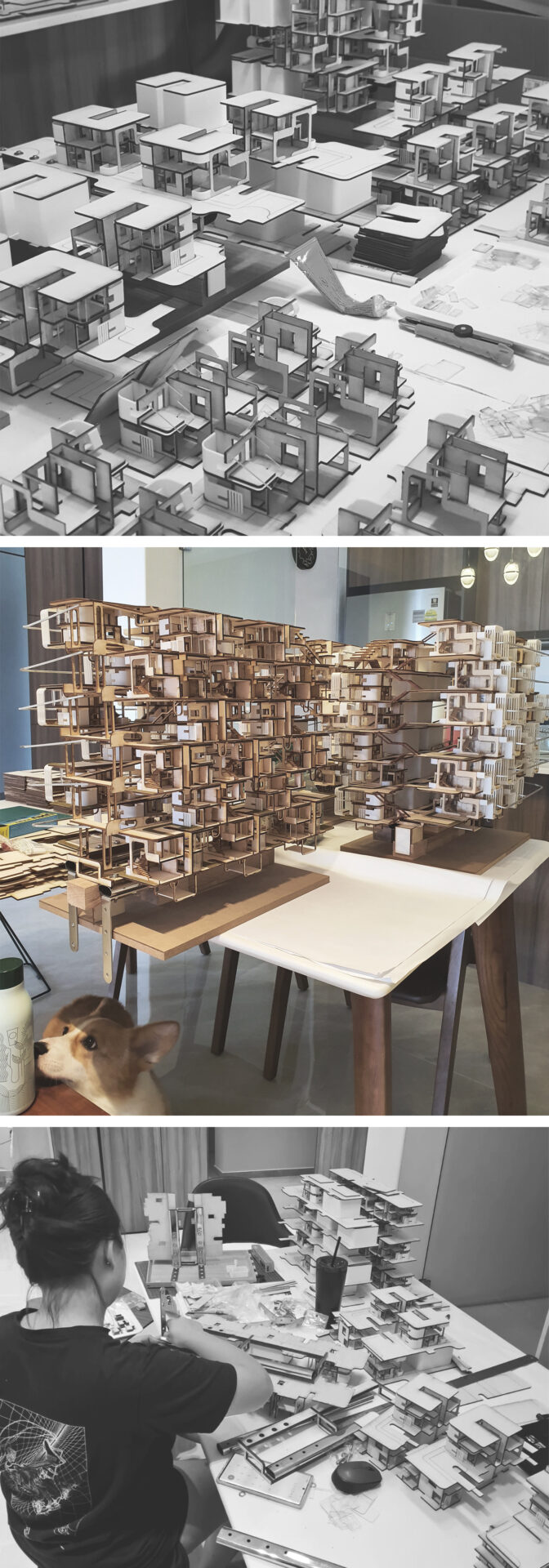
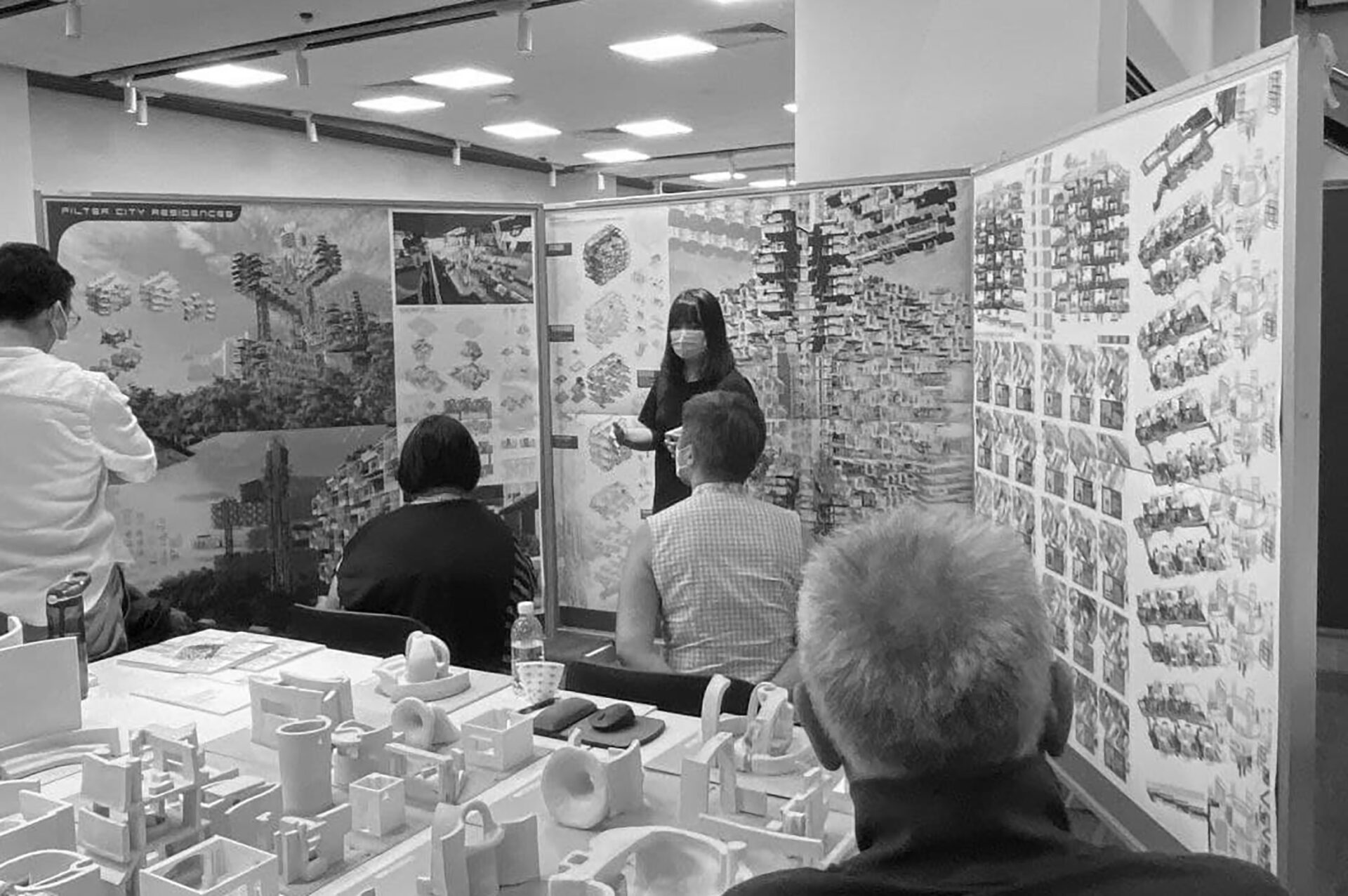
Supervisor's comments:
This thesis addresses the issue of SHN and home quarantine in apartment units which are not designed for the psychological strain of long term incarceration. Using a twofold strategy of interpreting the many thresholds in high density housing and the idea of secret gardens, the thesis sets about designing from interior spaces to rethink doorstep, shared corridors and forecourts and to extend views beyond the confines of party walls and the physical boundaries of a room. Long term stay within apartments , segregated floors and in an entire block are no longer an issue with extended private and communal outdoor spaces allowing for physical segregation yet visual contact. The entire group form of apartments maintains a porosity to enable minimum airflow requirements through voids of critical dimension and for admitting sufficient daylighting of interior gardens and sub-atria.
- Assoc. Prof. Joseph Lim (Dr.)